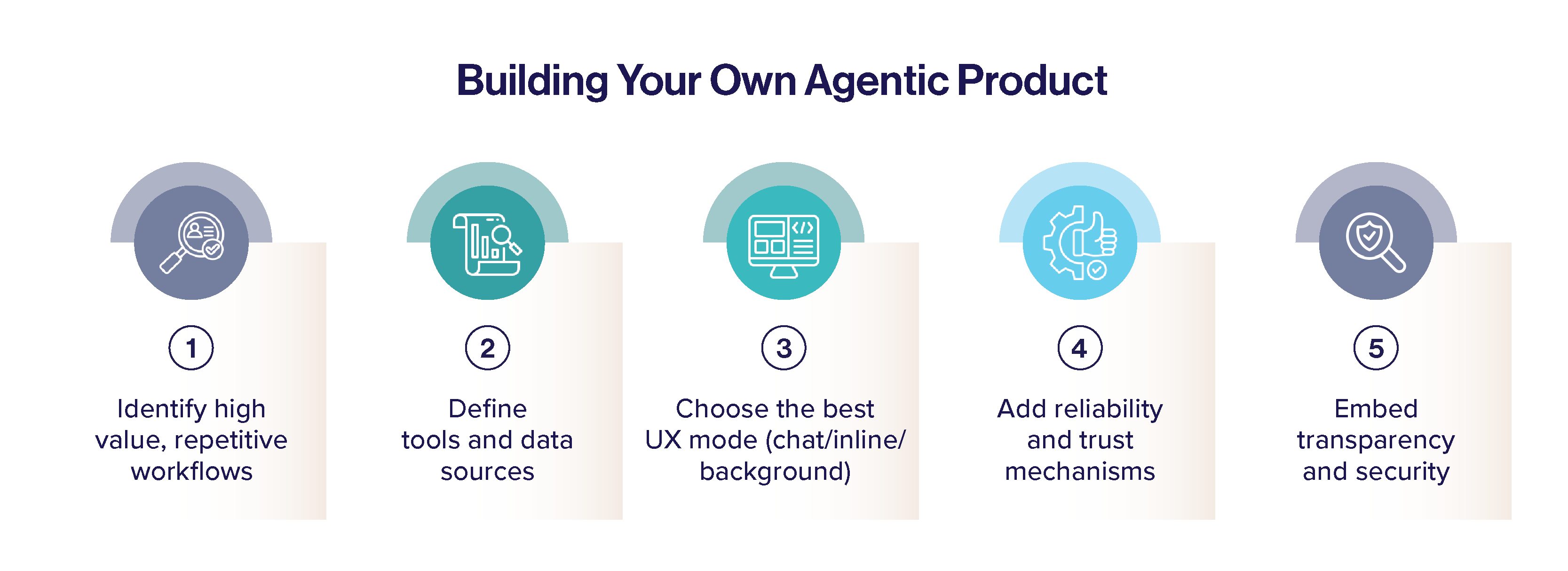Introduction
Over the past two years, a new generation of AI applications has emerged—products that seamlessly combine Large Language Models (LLMs) with intuitive, purpose-built user interfaces (UIs). These are not simply “ChatGPTs wrapped in a UI.” They represent a new paradigm of agentic software design, where intelligent systems collaborate with humans, tools, and data sources to achieve desired outcomes.
Two standout categories, ChatGPT and AI code assistants (such as Cursor, Windsurf, and GitHub Copilot), have already proven the commercial viability of this approach. But they are not the only ones. In this blog, we will explore eight major success stories, analyze their design patterns, and highlight lessons developers can use to build the next generation of AI-powered products.

1. ChatGPT – The Universal AI Assistant
UX Design: Conversational chat interface with multimodal capabilities (text, code, vision, and tools)
Agentic Elements:
- System instructions define persona and behavior
- Integrates tools such as browsing, code interpreter, and file handling
- Uses memory for persistent context
Why It Works:
- Universal interface familiar to all users
- Flexible tool integration
- Evolves through plugins and custom GPTs
Lesson: Start with a universal interface, then add modular, goal-specific tool invocation.
2. GitHub Copilot – Contextual Code Autocompletion
UX Design: Inline AI suggestions within IDEs
Agentic Elements:
- Predicts developer intent from code context
- Provides real-time completions and refactoring
Why It Works:
- Seamless integration into developer workflows
- Uses large training corpus of code
Lesson: Deep integration into frequent workflows beats standalone AI apps.
3. Replit Ghostwriter – Cloud-Native Coding AI
UX Design: Browser-based code editor with conversationalAI chat
Agentic Elements:
- Live AI suggestions and explanations
- Code generation, refactoring, and execution
Why It Works:
- Combines code editing, execution, and AI assistance in a unified environment
Lesson: When you control the stack, integrate AI deeply into every workflow stage.
4. Jasper AI / Copy.ai – Specialized AI Copywriters
UX Design: Guided workflows for creating ads, blogs, and emails
Agentic Elements:
- Prompt templates for specific content types
- Adjustable tone, format, and style
Why It Works:
- Solves a clear business problem for marketers
- Eliminates the blank-page problem
Lesson: Focused task-specific agents deliver higher ROI than general-purpose tools.
5. Glass Health – Clinical AI Assistant
UX Design: Physician-facing interface for symptom and diagnosis input
Agentic Elements:
- Generates differential diagnoses and SOAP notes
- Leverages medical databases and structured templates
Why It Works:
- Speeds up clinical workflows
- Adds trust with evidence-backed outputs
Lesson: In regulated domains, combine LLMs with trusted knowledge bases and templates.
6. Harvey AI / Casetext – Legal AI Copilots
UX Design: Contract review, case search, and legal Q&A
Agentic Elements:
- Fine-tuned legal models
- Clause extraction, case summarization
Why It Works:
- Saves hours of research time
- Clear ROI for legal professionals
Lesson: Trust is critical—use citations, guardrails, and domain-specific fine-tuning.
7. Notion AI / Coda AI – Embedded Productivity Agents
UX Design: AI features embedded directly within documents and spreadsheets
Agentic Elements:
- Performs summarization, rewriting, and data extraction
- Operates seamlessly in the background
Why It Works:
- Zero context-switching
- Makes AI feel like a native part of the app
Lesson: The most effective AI agents often work invisibly—integrate them where users already operate.
8. Hex / Tableau AI – Intelligent Data Science Agents
UX Design: Natural language querying over structured datasets
Agentic Elements:
- Converts text queries into SQL
- Automatically generates charts and insights
Why It Works:
- Empowers non-technical users to access data insights instantly
Lesson: Combine LLM reasoning with domain-specific tools to deliver tangible value.
Common Design Patterns Behind Successful Agentic Systems
Analyzing these examples reveals consistent AI product design principles:
- Goal-Oriented Agents – Each agent focuses on a clearly defined “job-to-be-done.”
- Domain-Specific Toolkits – Integrate tools tailored to the target user’s workflow.
- Context Awareness – Use memory, historical data, and data integration to make the agent smarter.
- Frictionless UX – Reduce user effort by embedding AI in familiar environments.
- Trust and Guardrails – Critical for adoption in sensitive sectors like legal, finance, and healthcare.

How to Build the Next Generation of Agentic Products
To apply these principles in your own GenAI product development:
- Identify high-value, repetitive workflows in your target industry.
- Define the set of tools and data sources your agent will leverage.
- Choose the optimal UX mode—chat, inline, or background automation.
- Design reliability tests and user trust mechanisms.
- Add explainability, transparency, and security layers to earn user trust.

Final Takeaway
The success of ChatGPT, GitHub Copilot, Jasper AI, and Glass Health demonstrates that building powerful AI products is not just about large language models. It’s about combining intelligence with purposeful UX design, domain context, and workflow integration.
The next wave of agentic AI solutions will go beyond simple automation—they will act as intelligent collaborators that understand user intent, operate autonomously when needed, and deliver measurable business outcomes.
Ready to Build Your Own Agentic Solution? Partner with Relevance Lab to accelerate your journey from concept to enterprise-grade AI systems. Contact us today for a free consultation.

